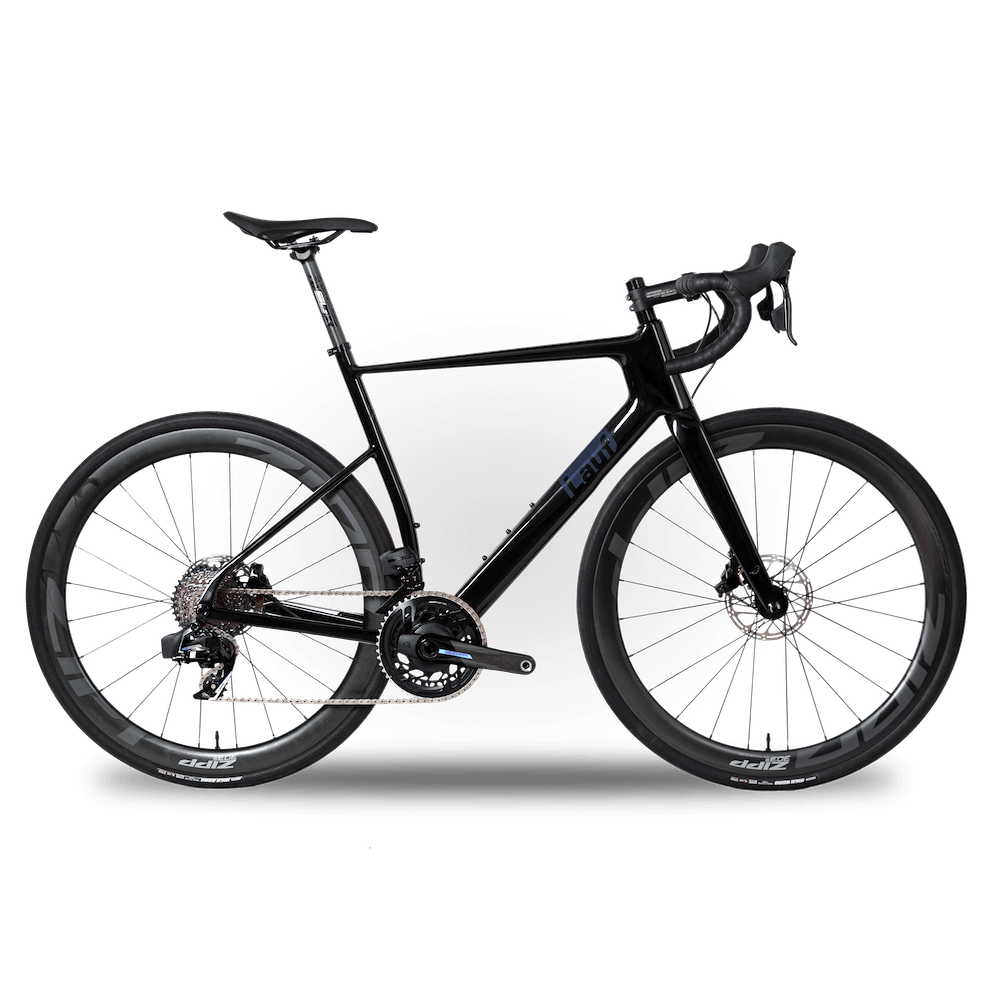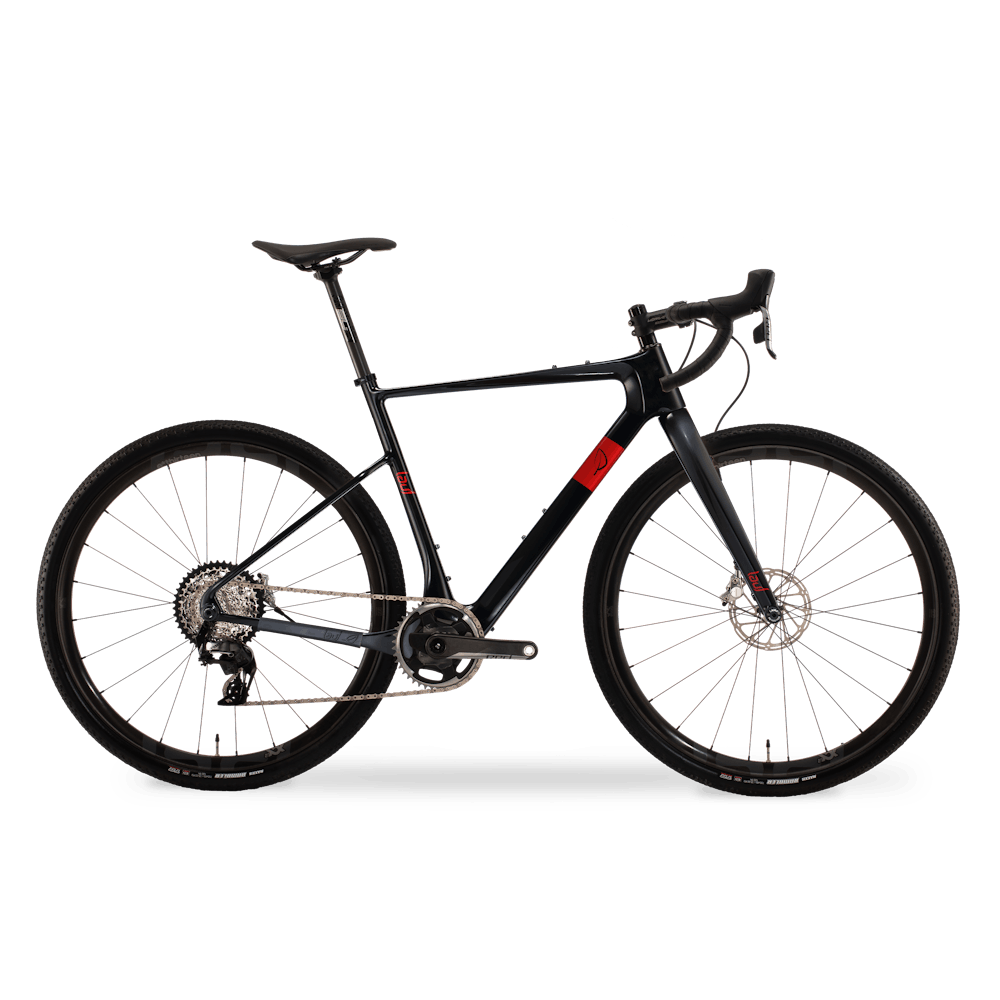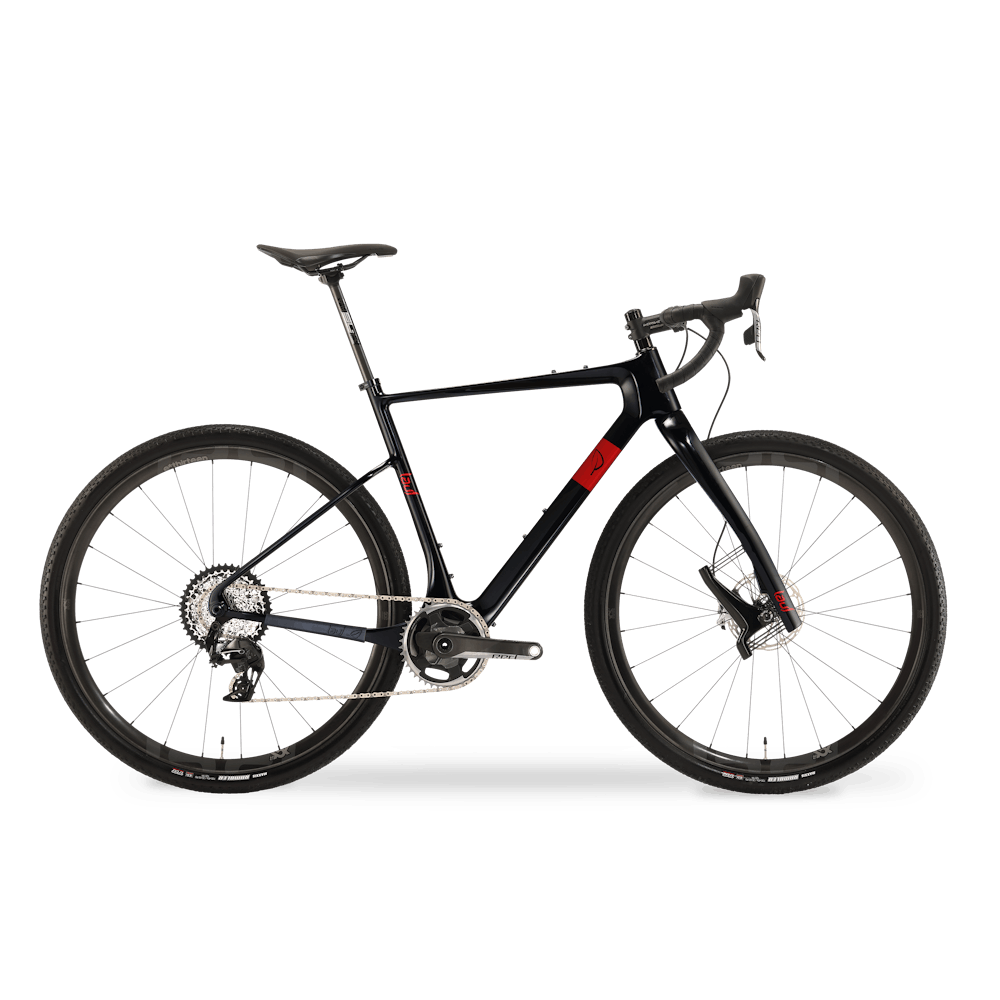Elja

And we are live!
Check the bikes out here!
XC version Elja XC and the trail version Elja Trail!
Timeline
September 18th

LSP — Lauf Single Pivot
A true single pivot. Without any supplemental links & pivots driving the shock.
But not the “old fashioned” single pivot you might have seen before.
“LS” is not short for Leaf Spring
Lauf made a name for itself with its leaf spring suspension fork. Optimized for smaller hits and vibrations. We’re still as much in lauf with that concept as the day we came up with it. Its instant suspension reaction, zero-maintenance and ultra-low-weight set it in a class of its own for gravel bikes. However, MTB suspension and gravel bike suspension are very different engineering tasks.
Gravel bikes are mostly subject to vibration from rough surfaces. Gravel bikes benefit from a “low-pass filter”, that wipes out high-frequency “stuff” with minimal friction and energy loss. This is done efficiently by the undamped leaf-springs of Lauf gravel suspension forks.
MTB suspension should be good at dealing with larger impacts, eating up impact energy through damping. Hence, we needed a damper in our system. And, when we add a damper, we might as well add a spring at the same time. Modern bike rear-shocks conveniently combine both.
We did not set out to incorporate leaf springs into MTB rear suspension. As that would be approaching things from the wrong end. We set out to simplify MTB rear suspension where we could, while maintaining optimal suspension performance.
LSP has leaf springs
LSP ended up incorporating leaf springs! Just not in the way we (or you?) expected.
Don’t cross a river for water
Studying other suspension systems made us realize that if we chose a good pivot location for a single pivot suspension system, there really wouldn’t be gains from adding multiple pivots, links or sliders. In fact, we think a lot of placebo-medicine is being thrown around in the industry. Stay tuned, a detailed video-analysis of some key MTB suspension systems goes live October 31st.
Most MTB rear suspension designs locate their effective center of rotation in a similar area, for good reasons (reasons we’ll cover in our upcoming MTB suspension video-analysis). They however reach their targeted center of rotation through various methods, avenues and alleys.
At Lauf we don’t like crossing rivers for water. We simply placed our main pivot in the right spot. In a simple single-pivot manner. Not via needlessly complicated measures.

What does LSP do?
Why don’t all bikes use simple single pivot rear-suspension? And how does LSP improve upon older designs?
- Flat leverage ratio curve - Decades ago, multi-link suspension designs introduced the (awesome) possibility of ramping up their coil-spring suspension stiffness towards the end of suspension travel. Giving you responsive suspension that still didn’t bottom out all the time. However, it’s like nobody got the memo that modern air shocks have volume spacers to achieve exactly this. When studying leverage ratio curves of modern multi-link XC/Trail bikes, one finds that they are generally pretty flat, i.e. they are not utilizing their ability to provide a variable leverage ratio through their linkage system. Because, why would they? When the air-shock already does it.
- Lack of lateral stiffness - The way single pivot rear suspension designs are generally executed, there is a lot of lateral flex. This is where LSP comes in with its:
- Bracing-Box. Firmly bracing the left and right swingarms together (crucially) behind the seat tube. Resulting in an order-of-magnitude laterally stiffer structure than if one would go the traditional route of bracing the sides together in front of the seat tube.
- Oversized main-pivot bearing. BSA/DUB bottom bracket main pivot. For maximized anchoring strength and stiffness.
- Maximized main pivot spacing. For a maximized bracing angle.
- Oversized shapes. Where appropriate for stiffness.
3. Lateral loading of rear shocks - Some single-pivot designs expose the rear shock to undesirable lateral loads (in extreme riding scenarios). This is where LSP employs “leaf springs”, or as we call them, “flex-arms”. The flex-arm design doesn’t provide suspension, but it “greases up the system” and prevents it from damage. It takes advantage of the distance from rear shock to the Bracing-Box in the LSP design, to provide lateral compliance between rear wheel and rear shock when needed.
4. When bike brand X has 4-bar linkage rear suspension, this tends to make bike-brand Y want to come up with a 5-bar linkage system. More is more, right?
LSP is here to improve your Quality of Life Index and give you a fresh breath of simplicity and singletracks.
LSP is single pivot rear suspension, done the Lauf-way!
September 20th
Jack of Two Trades, Master of both.
Class-Leading Lightness meets Class-Leading Tire-Clearance.
XC race-fast AND trail-capable.
September 22nd
Lauf Elja is not a Minus-Bike*
* Minus-Bikes = MTBs that can't fit proper MTB tires.
MTBs today are so under-tired it's getting tired.
Remarkably, road bikers have been adjusting faster to wide tires than MTBers lately! Strange isn't it? Thing is, road bike riding conditions are more controllable. On road bikes it's simpler to measure things and thus prove that wider tires are faster (despite feeling slower).
When you think about it... the perceived- vs real- speed paradox didn’t really start to crumble until we had widespread use of power meters. Suddenly we had tools to quantify speed vs. input, and gradually tire widths started climbing up. Meanwhile, our built-in speed sensors (ears, eyes and sensory nerves) interpret a harsh/unstable ride as a fast one.
"It FEELS fast, so it must BE fast"
On MTBs there are many variables at play. Bumps, jumps, skids, slides... So, despite logic telling us MTBs would benefit more than road bikes from bumping up tire sizes, the difficulty of quantifying things has made the bike industry lean back into the old "it FEELS fast, so it must BE fast".Comparisons of a wide range of MTB tire widths have also been hard to do. As most MTBs simply cannot fit a wide range of tire widths.
Isn't FUN the reason we are riding bikes?
By now, most cyclists know that wider tires roll faster, especially as surfaces get rougher, and their increased grip enables you to descend faster. These speed gains have to outweigh the higher air resistance and added weight of the wider tires. However, for MTBs, rolling speed and descending grip are generally an order of magnitude more important than aerodynamic gains or a very slight weight penalty in tires. Plus, descending faster with more grip is more fun! And isn't fun the reason we are riding bikes in the first place?26” XC/Trail bike. Anyone?
We've had a similar debate before. Does anybody remember 26" MTBs? It took a decade or so for 29ers to eliminate them. Nowadays, pretty much everybody would agree that a 29er is simply faster than a 26er. But 26ers did indeed feel more "snappy", and therefore it took us several years to admit to ourselves that our built-in speed sensors were wrong.Plus-Bikes killed big tire MTBs
So much resources are being thrown at making XC/Trail bikes fast nowadays. But why are they still so skinny? We think a big part of the problem lies with the Plus-Bikes (2.8" - 3.2") of a decade ago or so. In some ways, these well-intended bikes ruined the reputation of wider MTB tires. They were generally not designed to be race-winning machines, instead they were designed to be casual semi-Fat-Bikes, or in some cases lower-end MTBs intended for less skilled riders, or in other cases hardtails that had the extra tire width to compensate for the lack of rear suspension.The common misconception was that all the confidence-inspiring grip of the wider tires would fit beginners well, but surely they wouldn't be fast! Because, how could they? Since the bikes didn't vibrate, shake, bounce and rattle around as fast bikes should. Hence, these bikes were generally not built for all-out-speed. They didn't have top-end race-light full-suspension frames, they didn't have top-end wheels and parts and they didn't have speed-focused tires.
Plus-Bikes weren't the best version of themselves, and thus ruined the reputation of wider tires for MTBs for the decade that would follow.
End of an era
Lauf Elja is here to put an end to the era of under-tired MTBs.The Elja frame fits 2.8" 29er tires, with abundant space for the elements! There is room for up to 3.0" with the required space for the elements.
Not a Minus-Bike, not a Plus-Bike.
Elja is a Mountain Bike.September 23rd
Our top build Elja comes with an entry to a 5 day stage race in Iceland!
Stay tuned...September 25th
Winter / Early Spring 2025
An Elja delivered to your doorstep




